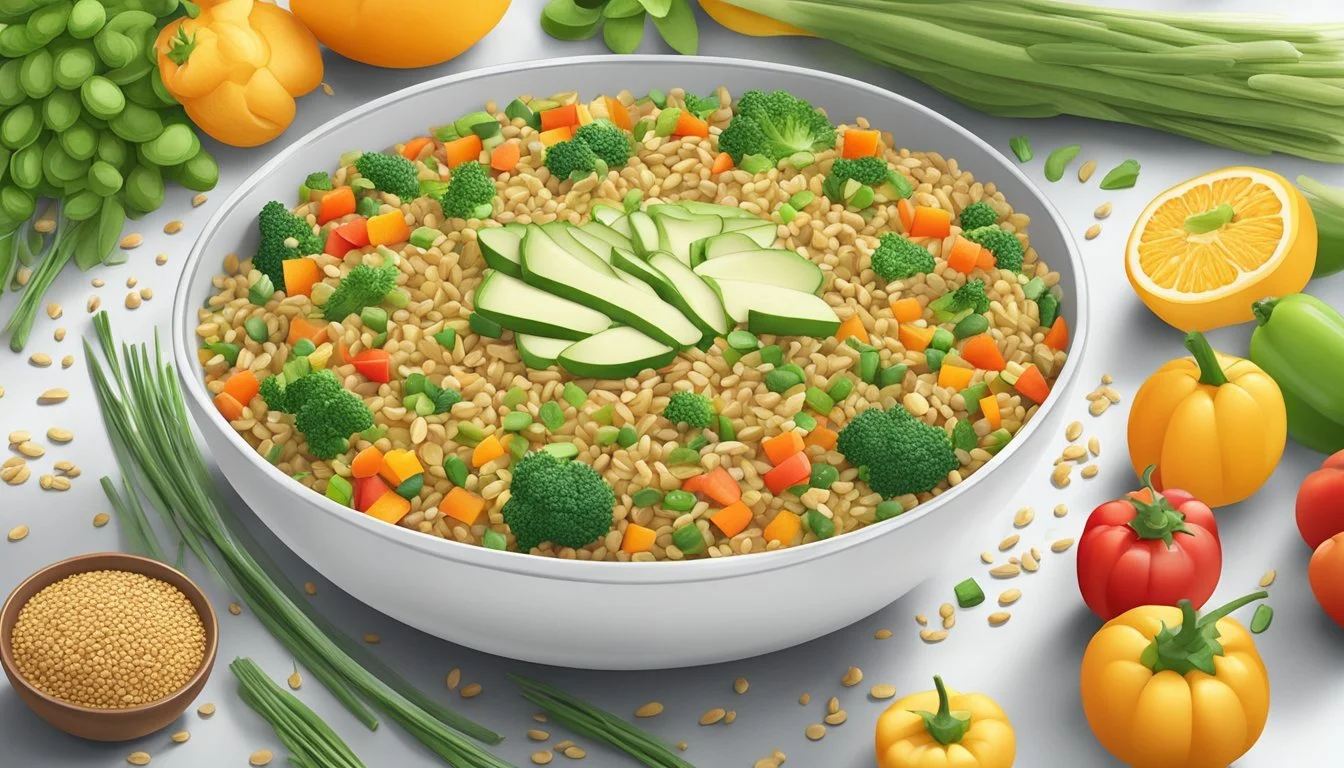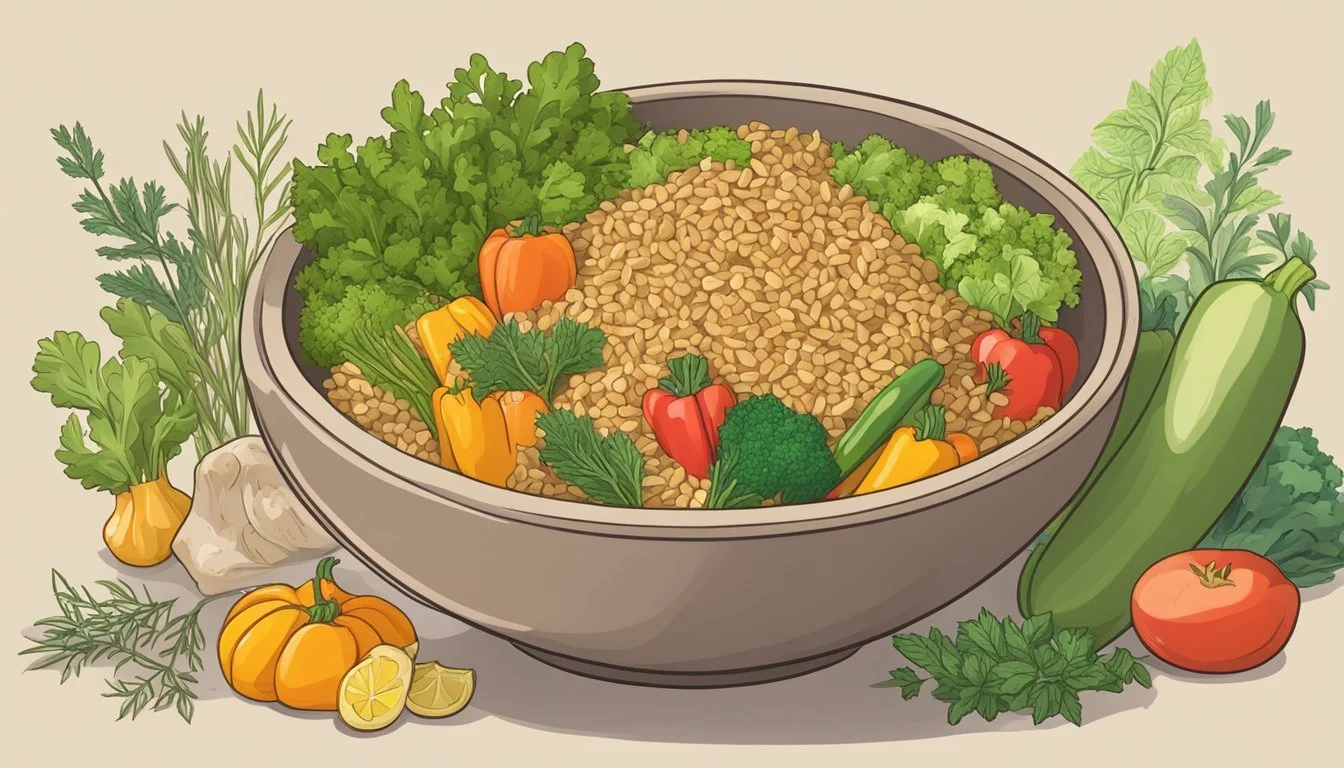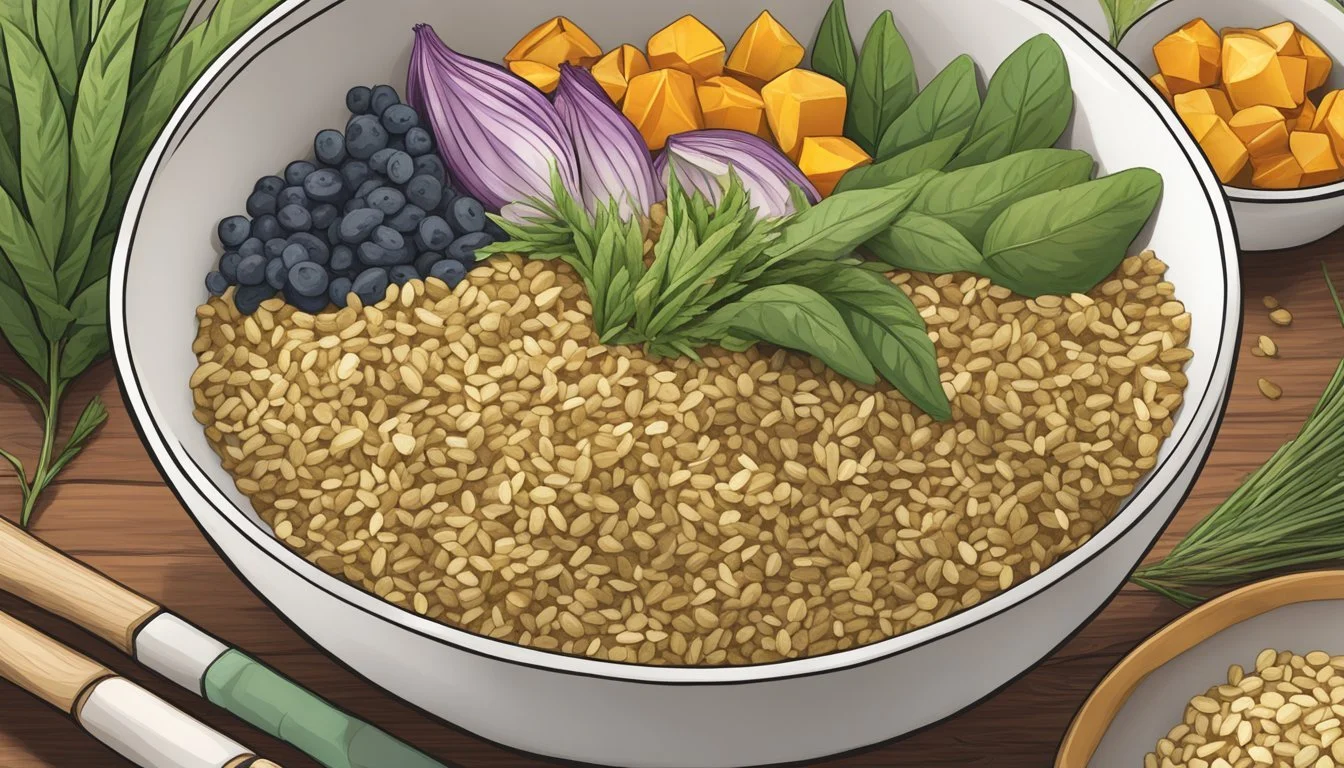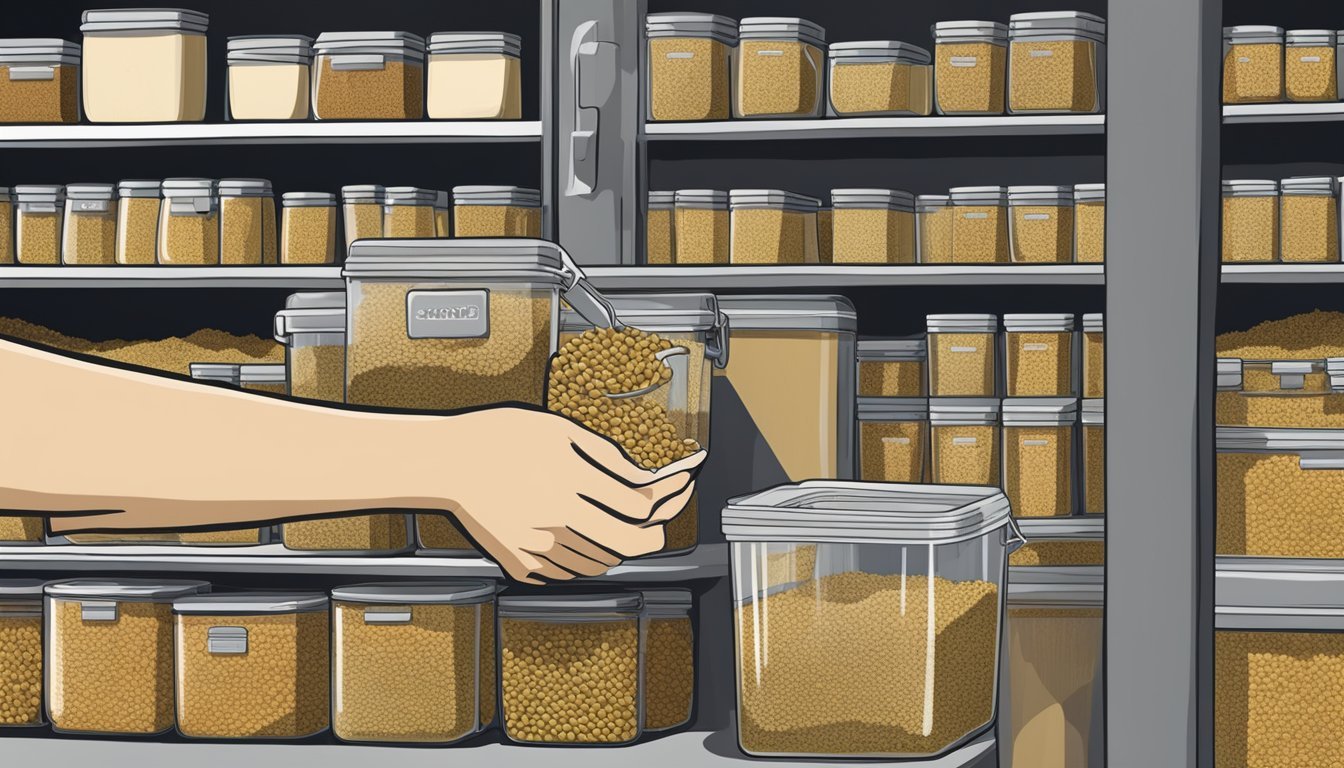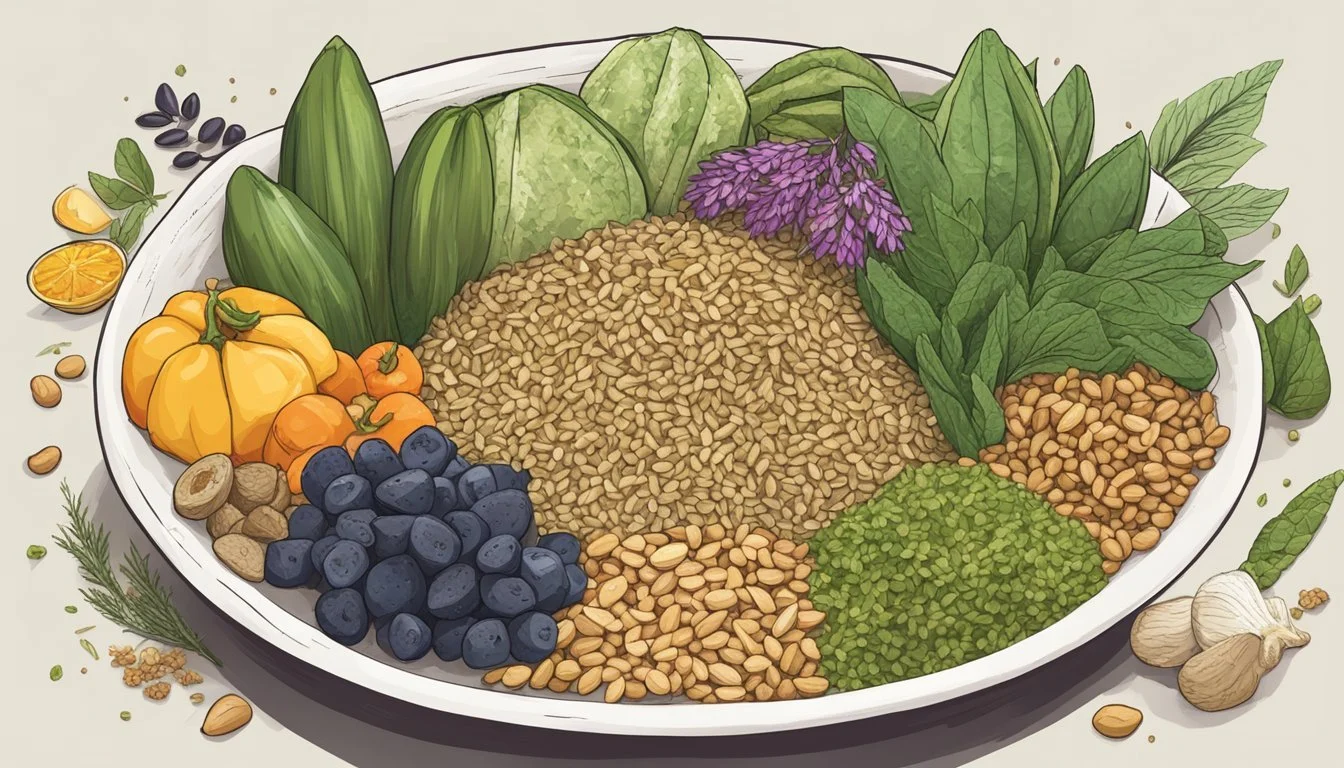Is Freekeh Vegan?
Unveiling the Truth About This Ancient Grain
Freekeh, a traditional Middle Eastern grain, is gaining popularity in the vegan community due to its nutritional profile and versatility in plant-based cuisine. Made from young green wheat that has been roasted and then threshed, freekeh is inherently vegan, as it is a purely plant-based food item. Vegans, individuals who abstain from consuming animal products, can incorporate freekeh into their diets as a source of protein, fiber, and an array of vitamins and minerals. Bearing a smoky flavor and a unique, chewy texture, freekeh serves as an excellent ingredient in a variety of vegan recipes, ranging from salads to soups.
With the rise in plant-based eating, freekeh's high protein and fiber content make it particularly appealing for vegans looking to ensure they are meeting their nutritional needs. One cup of cooked freekeh can provide roughly 16 grams of dietary fiber and 24 grams of protein, which is more than what is found in equivalent servings of other popular grains like quinoa. Furthermore, its low-fat content complements a heart-healthy diet. Despite its wheat origin, the ancient grain can be a part of many vegan diets; however, it contains gluten, which makes it unsuitable for those with gluten intolerances or celiac disease.
The cooking process for freekeh is straightforward, enhancing its appeal for use in daily meal prep. Cracked freekeh can cook in about 10 minutes, while whole freekeh typically takes 30 to 40 minutes. After cooking, it can be steamed for a few minutes to reach the desired tenderness. This ease of preparation, along with its robust nutritional profile, secures freekeh's place as a beneficial staple in vegan kitchens.
What Is Freekeh?
Freekeh is a wheat-based grain that is harvested while still green and roasted during the production process. It has remained a staple in Middle Eastern cuisine for centuries and is revered for its nutritional profile, offering high fiber and protein content and being a rich source of vitamins and minerals.
Origins of Freekeh
The history of freekeh can be traced back to the Middle East, where it originated. It resulted from ancient practices where farmers harvested wheat while it was still young and green. The wheat, specifically green durum wheat, is roasted to remove the straw and chaff, giving it a distinct flavor and aroma. Freekeh's processing makes it different from other grains – its roasting while green preserves key nutrients and a smoky taste.
Freekeh as an Ancient Grain
As an ancient grain, freekeh has been a part of human diets for thousands of years. Despite being less well-known than some other grains, freekeh is characterized by its high nutritional value. It is a whole grain, suggesting that it retains all parts of the grain kernel, including the bran, germ, and endosperm. This whole grain status contributes to its dense nutritional profile. However, it's important to mention that freekeh contains gluten, which may not suit those with gluten sensitivities or celiac disease.
Nutritional Profile
Freekeh is a vegan grain with a robust nutritional profile, featuring high fiber content, quality protein, and a rich array of vitamins and minerals. It's an exceptional addition to any vegan diet due to its dense nutrient composition.
Fiber Content
Freekeh is particularly high in fiber, with a single cup of cooked freekeh providing approximately 8 grams of fiber. This represents a significant portion of the recommended daily intake, contributing to digestive health, blood sugar regulation, and a feeling of fullness after meals.
Protein Quality
Protein is a crucial nutrient for bodily functions, and freekeh delivers quality vegan protein. A serving size contains about 12-15 grams of protein, which includes essential amino acids necessary for muscle repair and growth.
Vitamin and Mineral Richness
Freekeh is a source of various vitamins and minerals, enhancing its nutritional value. Notably, it contains iron, essential for oxygen transport and cell growth, and calcium, vital for bone health. Its potassium content supports cardiovascular health, while it contains lower amounts of vitamins A and C. Freekeh also offers these nutrients without contributing excess sodium, sugar, or fat to the diet. Here is a brief overview of its nutritional content per cooked cup (roughly 198 grams):
Calories: 190-200
Carbohydrates: 40-45 grams
Dietary Fiber: ~8 grams
Protein: 12-15 grams
Fat: 1-2 grams
Iron: 2 mg (11% DV*)
Calcium: 30 mg (3% DV*)
Potassium: 300 mg (6% DV*)
Vitamin A: Minimal
Vitamin C: Minimal
Sodium: Less than 10 mg
*DV = Daily Value based on a 2,000-calorie diet
Culinary Uses
Freekeh, a wheat-based grain, emerges as a versatile component in vegan cuisine, celebrated for its smoky flavor and nutritional benefits. In its culinary uses, freekeh serves as a robust foundation for a variety of dishes, accommodating an array of vegetables, legumes, and herbs, thus offering a hearty alternative to other grains like rice or bulgur.
Dishes Featuring Freekeh
Freekeh plays a starring role in many Middle Eastern dishes, where it's often paired with a colorful mix of vegetables and legumes. It fits perfectly in traditional recipes such as tabbouleh, where it can replace bulgur. The grain's texture makes it suitable for both salads and soups, and it's commonly seasoned with fresh herbs like mint, parsley, and cilantro, offering a canvas of flavors.
Salads: Freekeh adds a chewy, nutty component to salads, often enhanced with ingredients like tomatoes, cucumbers, chickpeas, and fresh herbs.
Soups: A soup featuring freekeh might include aromatic onions and garlic, with vegetables like carrots and celery.
Recipe Ideas
For those looking to incorporate freekeh into their menus, consider these tried-and-true favorites:
Pilaf: Freekeh pilaf with sautéed onions, mushrooms, and fragrant spices such as cumin.
Risotto: A vegan freekeh risotto, deliciously creamy, often incorporating peas, amaranth, or even corn.
Cooking freekeh as a side dish or a main dish is equally appealing. Its compatibility with other grains and pasta provides endless creative possibilities.
Cooking Methods
As for cooking methods, freekeh is typically prepared by boiling. Once cooked, it can be simmered with various components:
Whole Freekeh: Requires approximately 30 to 40 minutes.
Cracked Freekeh: Can be ready in less than 20 minutes.
The grain should be monitored closely until the liquid is mostly absorbed, and then left to steam, covered, to achieve the ideal texture. Freekeh also excels in dishes where it’s lightly toasted before boiling, to enhance its inherent smoky quality.
Is Freekeh Vegan?
Freekeh is a versatile grain revered for its nutritional value and compatibility with vegan diets. Extracted from young durum wheat, it possesses a rich protein content, making it a substantial component of plant-based food regimes.
Vegan Diet Compatibility
Freekeh, as an unprocessed grain, aligns perfectly with a vegan diet. It is a natural food product made from green durum wheat, harvested while young and then roasted. This grain is completely plant-based and does not involve any animal products or byproducts in its farming or processing, which makes it suitable for vegans.
Protein Content: Freekeh is notable for its high protein levels, which is vital for those on a vegan diet seeking to meet their daily protein requirements.
Gluten Consideration: However, being a derivative of wheat, freekeh contains gluten, making it unsuitable for those with gluten intolerances or celiac disease.
Food Pairings and Substitutions
Freekeh's nutty flavor and chewy texture allow it to blend seamlessly into various vegan dishes, from salads to stews.
Salads: It can be used in place of grains like quinoa in salads, especially when accentuated with ingredients like lemon for brightness or olive oil for richness.
Broth Cooking: Cooking freekeh in vegetable broth can enhance its flavor, offering a more savory taste that complement vegan recipes.
Substitutions: For those seeking gluten-free alternatives, quinoa serves as an excellent substitute, delivering a similar protein profile and a compatible texture for most recipes that call for freekeh.
Grain Protein Gluten-Free Flavor Profile Texture Freekeh High No Nutty, Smoky Chewy Quinoa High Yes Mild, Nutty Fluffy
In essence, freekeh is a beneficial addition to a vegan diet, especially for those looking to increase their protein intake. It should be noted that while it is healthful and rich in nutrients, individuals requiring a gluten-free diet should consider other grains.
Preparing and Storing Freekeh
Freekeh's preparation hinges on proper cooking techniques to enhance its smoky and nutty flavors, while correct storage ensures that its unique characteristics are preserved. Ensuring the grain remains chewy and flavorful is key for both culinary and nutritional satisfaction.
Cooking Instructions
To cook freekeh, one should start by rinsing the grains to remove any impurities. The standard ratio for cooking freekeh is approximately 2 ½ cups of liquid to 1 cup of grains. One can use water or broth to boil the freekeh, infusing it with additional flavors. When the liquid reaches a boil, one adds the freekeh, reduces the heat, and allows it to simmer:
Cracked freekeh: Simmer for about 15-20 minutes until tender.
Whole freekeh: Simmer for approximately 40-45 minutes.
Adding aromatics such as cloves, bay leaves, or lemon zest during cooking can impart subtle undertones to the dish. Once the water is mostly absorbed, it's critical to remove the freekeh from the heat, cover it, and let it steam. This ensures the grains remain moist and chewy.
Preservation Tips
After cooking, freekeh should be handled with care to maintain its texture and flavors. If there are leftovers or one wishes to prepare freekeh in advance, the following preservation tips are essential:
Cooling: Allow the freekeh to cool to room temperature before storing to prevent moisture build-up.
Refrigeration: Store in an airtight container to keep the freekeh fresh for 3-4 days.
Freezing: For longer storage, one can freeze freekeh. Portion it into an airtight container or freezer bag.
When using olive oil while cooking, it helps in preserving the roasted, smoky flavor of freekeh. Thawed or refrigerated freekeh should be brought to room temperature or reheated gently, preferably in a microwave or on the stovetop with a splash of water or broth to restore its moisture.
Health and Dietary Benefits
Freekeh, a whole grain, serves as an advantageous component of a vegan diet due to its high content of fiber and protein. It presents itself with a distinct nutty flavor and chewy texture, making it not only healthful but also satisfying in vegan culinary applications.
Weight Management
Freekeh's high fiber content is beneficial for weight management. A 1/4-cup serving of freekeh contains approximately 4.5 grams of fiber. This significant amount of fiber can contribute to a feeling of fullness, potentially reducing overall calorie intake. Moreover, as a low-glycemic index food, freekeh helps in maintaining stable blood sugar levels, which is crucial for managing cravings and weight.
Digestive Health
The grain's plentiful fiber also supports healthy digestion. Dietary fiber aids in regular bowel movements and helps to prevent constipation. By incorporating freekeh into one's diet, individuals can improve their digestive health and contribute to their daily recommended intake of fiber.
Vegan Nutrition Considerations
For vegans, freekeh is an exceptional source of plant-based protein, offering more protein than many other grains. It provides essential nutrients that might be harder to obtain in a vegan diet, such as iron and zinc. Given its nutrient density, freekeh can be a valuable addition to the vegan pantry. The grain can be boiled and enjoyed as a seed or in its cracked form, depending on the desired texture and cooking time.
Common Questions
When considering the dietary and nutritional profile of freekeh, two common inquiries arise regarding its allergen information and how it compares to other popular grains.
Allergen Information
Freekeh is a whole grain and a kind of wheat; thus, it naturally contains gluten. Those with gluten sensitivities or celiac disease should avoid consuming freekeh. As it’s a wheat product, it shares allergen properties with bulgur, farro, and other wheat-derived foods.
Freekeh Versus Other Grains
Freekeh compared with other grains:
Quinoa & Amaranth: Unlike freekeh, both quinoa and amaranth are gluten-free grains, making them suitable for those with gluten intolerances or celiac disease.
Rice: Rice is also gluten-free and is considered less nutrient-dense than freekeh. Rice comes in white and whole grain (brown) varieties, with the latter being more comparable to freekeh nutritionally.
Ancient Grains: Freekeh falls under the category of ancient grains, as does amaranth or quinoa, albeit it's less known than these counterparts.
Nutritional Content: Freekeh is highly regarded for its rich protein and fiber content, often containing more than commonly consumed grains such as rice or even bulgur.
It's imperative to note that while freekeh is a nutritious whole grain, it may not be suitable for everyone's diet, especially those requiring gluten-free options.

